Lavender is a popular woody perennial that is often seen in vegetable and flower gardens. Its fragrant purple blossoms draw pollinators and beneficial insects, making it a great companion plant.
Are you searching for some companion plants this season to go with your lavender plants in the garden? Fortunately, you can accessories your lavender garden with lots of choices! This post offers 15 plants to grow with lavender as a companion.
Characteristics of Lavender Companions
Companion plants for lavender are herbs, flowers, or crops that grow well with this notorious purple bloom. For instance, yarrow, rosemary, and Echinacea all grow well with lavender because they are tolerant of the same well-drained, drought-prone, low-fertility soils.
Companions of lavender typically have similar circumstances to this Mediterranean native:
- Habit of growth: perennial (zones 5 through 11, depending on the type of lavender)
- Well-drained soil that is sandy or gravelly
- PH in the alkaline range (6.5 to 7.5)
- Low levels of nutrition
- Full sunshine
- Summer heat is a lot.
- Dry spells
If a species can flourish in these conditions, then planting it in the same bed as the lavender will save you both time and space.
As you can see below, choosing the finest garden friends also depends on factors like height, spacing, fertility needs, and seasonal upkeep.
Companion Planting Benefits
Grown in the same garden bed, companion plants can support the growth of lavender or just add to its striking beauty. Garden landscapes that resemble natural ecosystems can be created by the age-old practice of interplanting.
Companion planting guarantees that plants cooperate to maintain natural “checks and balances,” which implies less work for you, as opposed to extensively relying on external inputs like irrigation or pesticides.
Companion planting for lavender has the following benefits:
Increase biodiversity
There is scientific proof that biodiversity makes your garden more resilient to pest infestations, harsh weather, and other challenges. Moreover, a wider variety of plants attracts more beneficial insects and is aesthetically pleasing.
Maximize space
When the plant is dormant, some allies of lavender can use the growth space. To obtain more floral “bang for your buck” in a compact space, you may covertly plant herbaceous perennials with various growth cycles in the same location.
Minimize soil preparation efforts
You can avoid putting in extra work to prepare different beds when you plant crops that demand equivalent amounts of soil in the same area. This gravelly, well-drained, low-fertility, slightly alkaline soils are ideal for companion planting.
Enjoy flower displays
While lavender is showy on its own, its purple spikes may be nicely complemented in garden displays and cut flower arrangements by a number of species.
More fragrance
If you thought lavender smelt wonderful by itself, you will be enthralled by the aroma when combined with sage, rosemary, jasmine, and other ingredients.
The Best Companion Plants
1. Oregano

Oregano is another outdoor herb that is easy to work with; it goes well with virtually anything, including lavender. Oregano tolerates a little shade behind the bushes, so it makes a great ground cover or edging for your perennial lavender beds.
These ferocious eaters of aphids, cabbage moths, and whiteflies will shield your vegetables from harm. Keep oregano near crops that depend on pollinators, such as strawberries, tomatoes, and squash, as it attracts bees.
2. Catmint

While catmint thrives in comparable settings and is more drought-tolerant than conventional mint, the two are not very compatible. Purple flowers, which would create a stunning border bed, are startlingly similar to lavender blooms.
We adore the way catmint turns into a handsome, sturdy bush that won’t overtake other plants. This herbaceous plant hibernates throughout the winter and sprouts again in the spring. It’s also almost the same procedure to prune lavender, which makes garden maintenance here a snap.
3. Jasmine

Jasmine surpasses lavender in scent intensity, despite being well-known for its rich aroma. Jasmine is a beautiful vine or brush that you may plant in your garden, though you may be more familiar with its aroma from perfumes and teas.
While winter-flowering jasmine species need a somewhat shaded region, summer-flowering kinds can survive in full-sun planting situations. The same high-drainage soils are ideal for jasmine, although it needs little more loamy nutrients to grow. Above all, jasmine requires lots of room from its lavender friends.
4. Sage

Sage, another Mediterranean herb, grows best in places that are exposed to bright, direct sunlight. It prefers soil that is gravelly or sandy and allows water to pass through it rapidly. These resilient, drought-tolerant plants don’t require any irrigation, much like lavender does.
In zones 5 through 11, sage is a perennial plant. It usually stays stouter than lavender plants, reaching heights of up to 3 feet and widths of up to 2 feet. To give the planting more depth, tuck sage plants in between lavender and rosemary.
5. Rosemary

Rosemary and lavender complement each other in the garden just as well as in your herbs de Provence spice blend. Their maintenance requirements are almost the same: occasional watering and pruning once or twice a year!
It likes soils that are between 6.0 and 7.5 pH and are poor in nutrients. But rosemary is not as hardy in the winter. In zones 6 and below, it cannot live without shelter from frost. A well-liked companion plant to deter pests from eating your garden’s produce is rosemary. It produces lovely, fragrant blooms in the spring and summer that draw bees.
6. Coneflowers
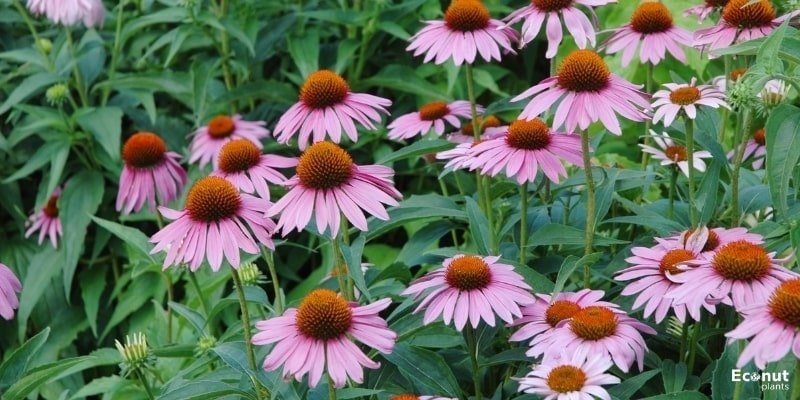
This decorative perennial plant, often known as Echinacea, is even more drought-tolerant and equally hardy in cold climates. Perfect for a prairie-style herb garden, the daisy-like blooms appear in most regions from June through October.
Coneflowers love direct sunshine and self-seed abundantly to come back each year. In winter, zones 3 through 9 will see Echinacea become dormant and return to the ground as an herbaceous perennial. It’s interesting to note that the cold stratification duration needed for Echinacea seedlings is the same for lavender planting.
7. Oleander
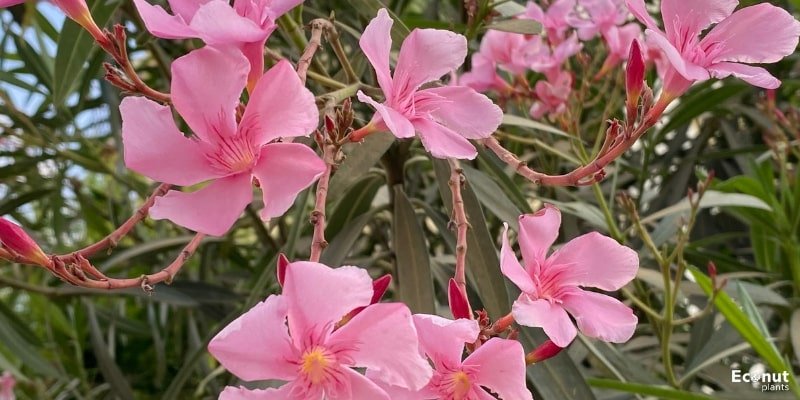
Even though this little tree or shrub is deadly in theory, it makes a beautiful accent to any landscape design. Native to places in North Africa where lavender is also found, it is thick and grows quickly.
Nearly all year round in zones 8 and above, oleanders star-shaped blooms show. But remember, this easygoing shrub can get up to 20 by 15 feet in size, so keep that in mind! Leave plenty of room for it so that it doesn’t encroach on lavender. Oleander is invasive in southern areas, so you should be careful not to plant it there.
8. Zinnias
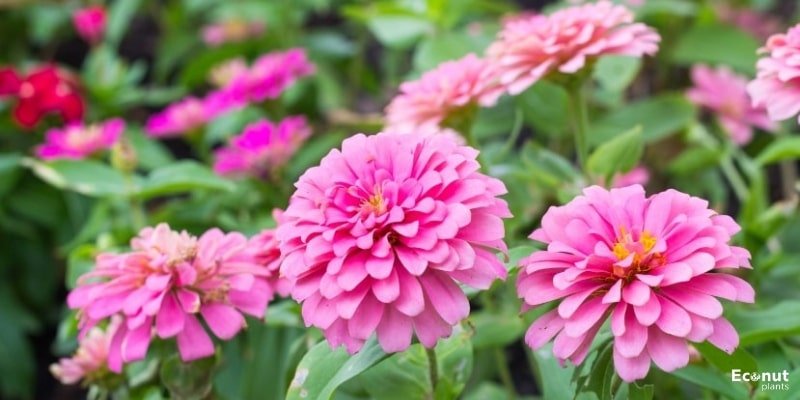
Zinnias, the only annual flower on this list, are surprisingly good when paired with lavender. This resilient bloom offers an array of hues that will transform your summertime herb garden into a rainbow. They don’t give a damn about humidity, heat, sunshine, drought, or water since they are so laid back.
Zinnias may enhance your food garden, which is an additional benefit you can take advantage of. Zinnias are among the greatest vegetable companion plants for a good reason—they attract a variety of helpful pollinators and predatory insects that increase yields and deter pests.
9. Alliums

These vibrant decorative grasses include pastel feathery blossoms and frosty blue leaves. For a prairie-style planting or an ornamental garden border with lavender planted, they provide the ideal textural break. When the soil is well-drained, this extremely drought-tolerant grass doesn’t care what kind it grows in.
Blue fescue won’t require any irrigation at all! The blue fescue will happily take a little shade from nearby rosemary or lavender shrubs if you don’t mind the flowers.
10. Olives
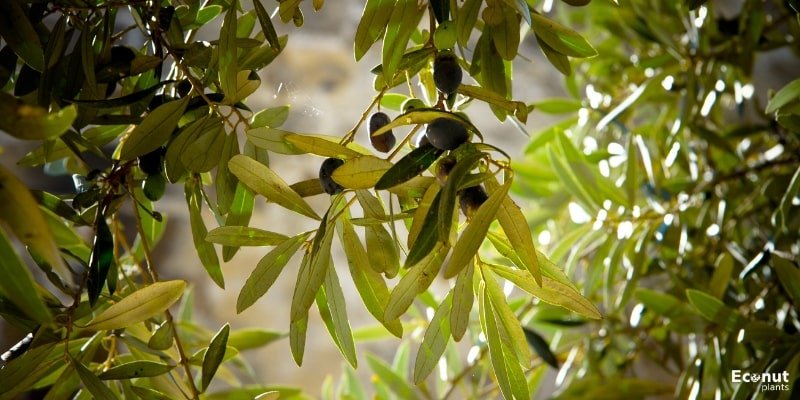
If you live somewhere warm, you can plant lavender with olives in a traditional Mediterranean garden. This subtropical tree that can withstand drought only grows in USDA zones 9 through 11, yet it does well when planted near lavender.
Lavender scents draw pollinators to olive trees, which also benefit from the same well-drained, gravelly soils. They both enjoy calm, pleasant winters and hot, dry summers.
11. Sedum
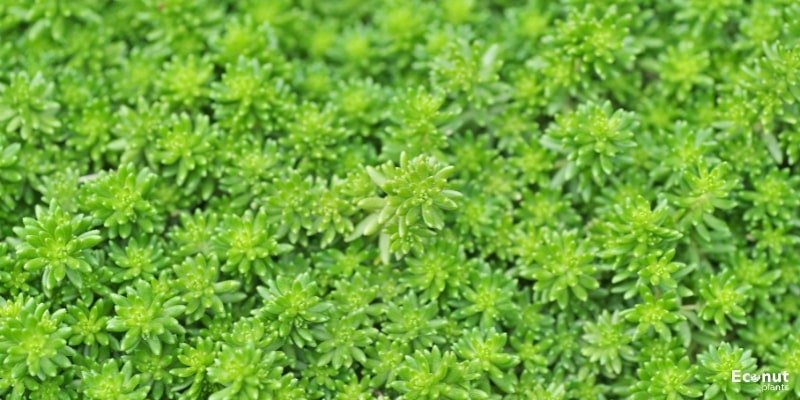
Sedum, also known as stonecrop, is available in a variety of lovely hues, including white, pink, red, orange, and salmon. This is the ideal border plant to nestle into the stony or gravelly areas where lavender is found. Stonecrop flowers thrive in the same alkaline, low-fertility soils. They also like arid regions and the heat.
You don’t have to worry about lavender outlasting sedums during the winter because they can survive in remarkably cold temperatures (as low as zone 3!). Sedum will still produce a lovely flower display in the autumn after the lavender blooms have faded.
12. Mugwort

Mugwort, or Artemesia vulgaris, is a curious silvery herb that thrives happily next to lavender. It does prefer a little bit more moisture than its buddies that do not mind drought, even though it likes drainage and sunshine.
The fragrant leaf of this perennial forb deters pests and draws pollinators. Aphids and whiteflies may be repelled by it. It is an excellent deterrent against mosquitoes!
13. Yarrow

This natural wildflower of North America is well-known for drawing a variety of helpful predatory insects and for its remarkable resistance to drought. In addition to growing well with lavender, yarrow is a great companion plant for a wide range of plants, including strawberries and tomatoes.
Just keep in mind to give lavender in your herb beds a minimum of 2-3 feet’ distance between other perennials. When in full bloom, it can spread fairly widely, but throughout the winter, it dies back to a small cluster.
14. Blue Fescue
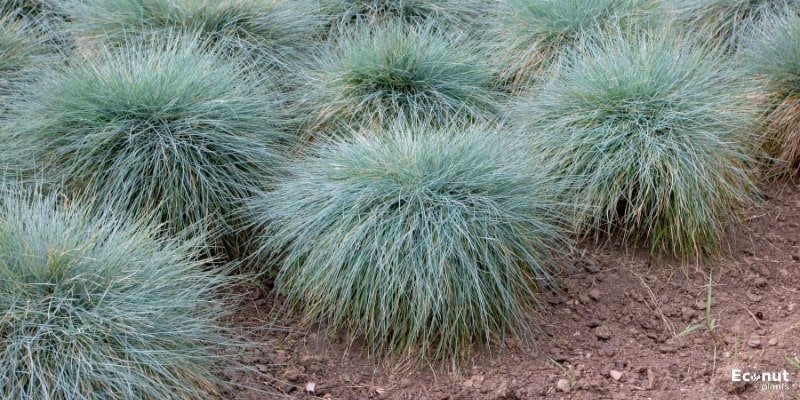
The pastel, feathery blossoms of these vibrant ornamental grasses are paired with icy blue leaves. They provide the ideal textural contrast for an ornamental garden border or prairie-style planting of lavender. Given well-drained soil, this extremely drought-tolerant grass doesn’t care what kind of soil it grows in.
Without a doubt, blue fescue doesn’t require any irrigation! It will gladly take a little shade from nearby rosemary or lavender shrubs if you don’t mind the blue fescue flowers.
15. Thyme
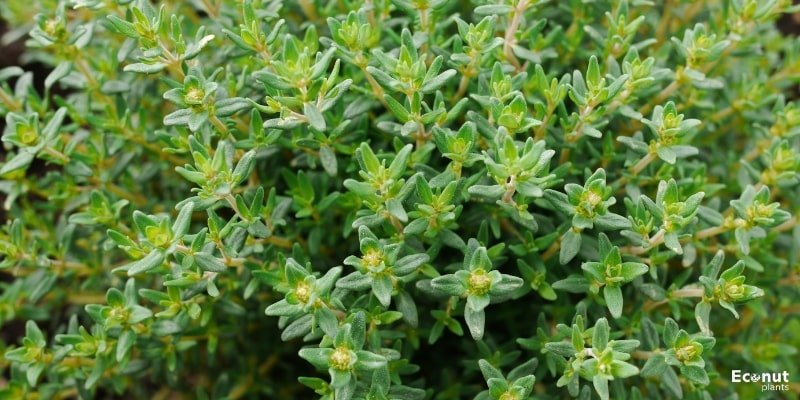
Thyme is a common ingredient in cuisines all around the world. The herb itself is endemic to Eurasia, and certain forms may have come from the hot, sunny outcrops next to high-elevation wild lavender meadows in the Mediterranean basin.
Thymus serphyllum, sometimes known as creeping thyme, is a lovely creeping thyme type that grows well in partial shade and forms a dense decorative carpet beneath lavender and its neighbours. It is still hardy in zones 5 through 9 and doesn’t mind if your beds aren’t watered.
Conclusion
Lavender clearly enjoys the companionship of partners that it has in its natural, wild surroundings. Plants that tolerate heat, sunshine, drainage, and drought are probably ideal companions for this brilliant purple herb. If they are low-maintenance and perennial, that’s an added bonus.
Lavender is one of the most gratifying herbs you can grow, whether you want to smell its delicious perfume on your kitchen counter or use it to fight off insects in your veggie garden!

